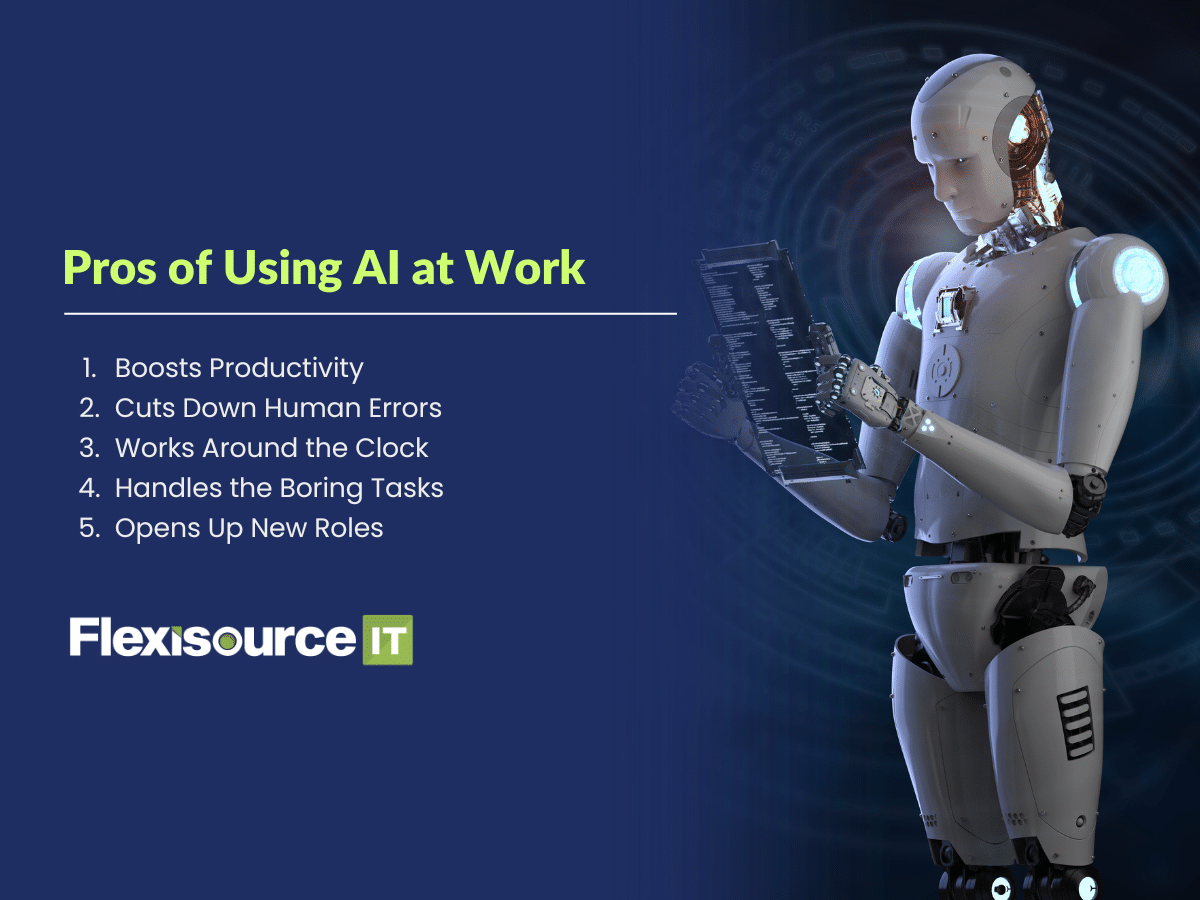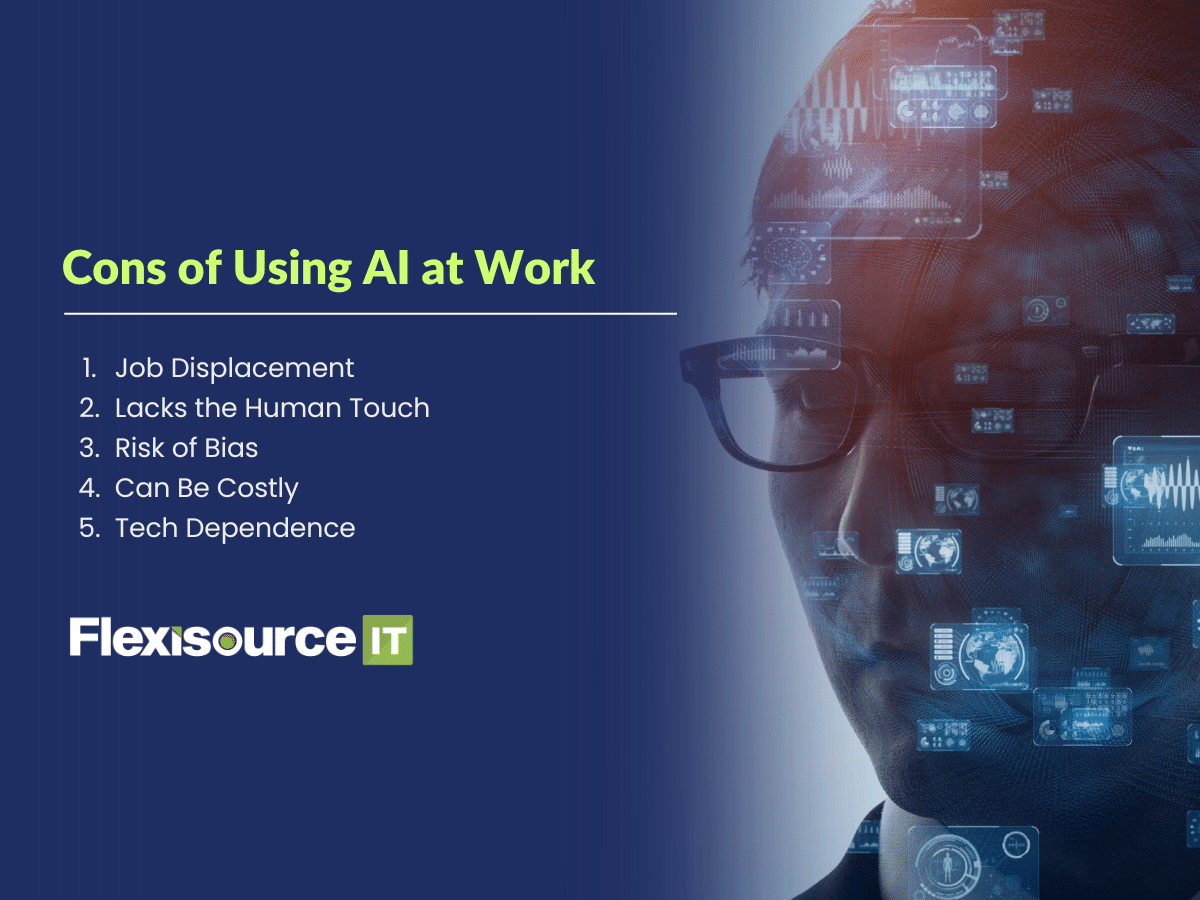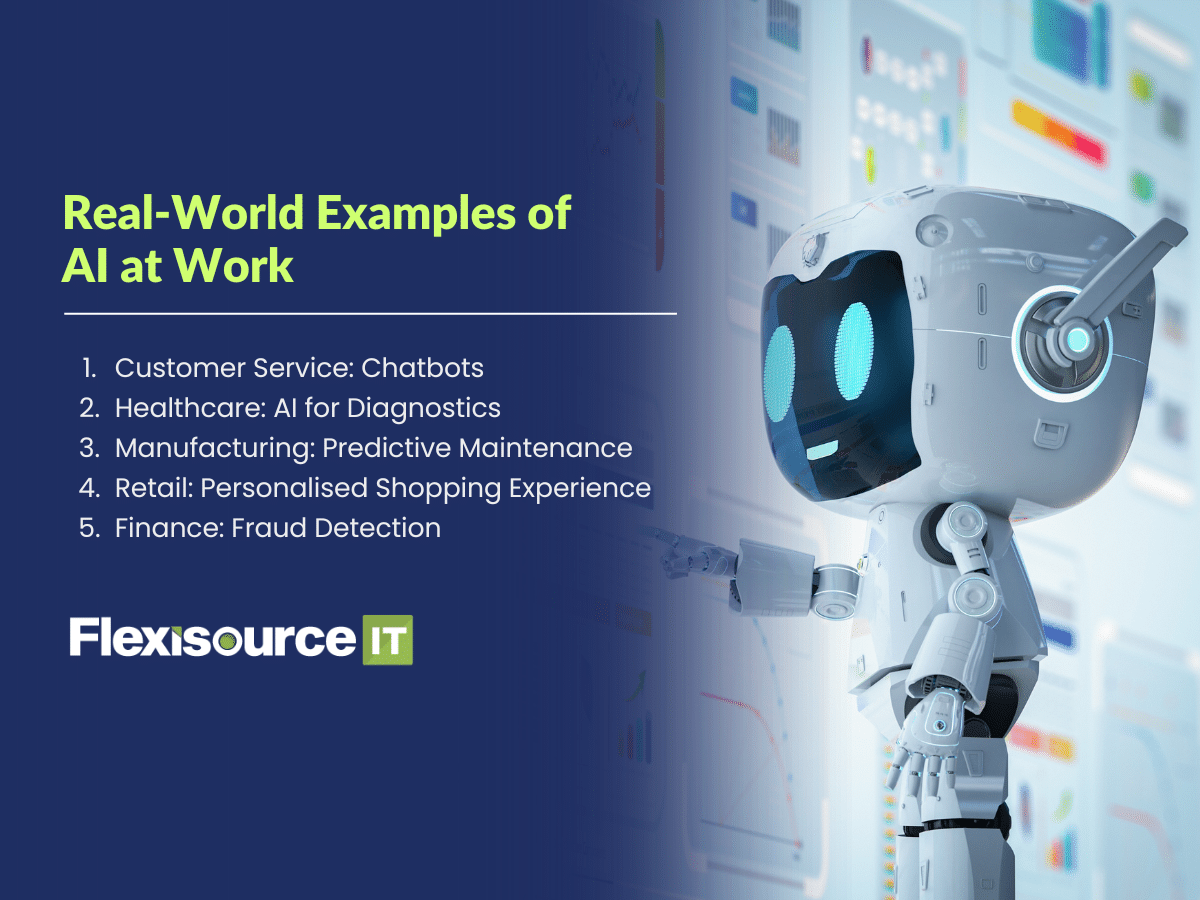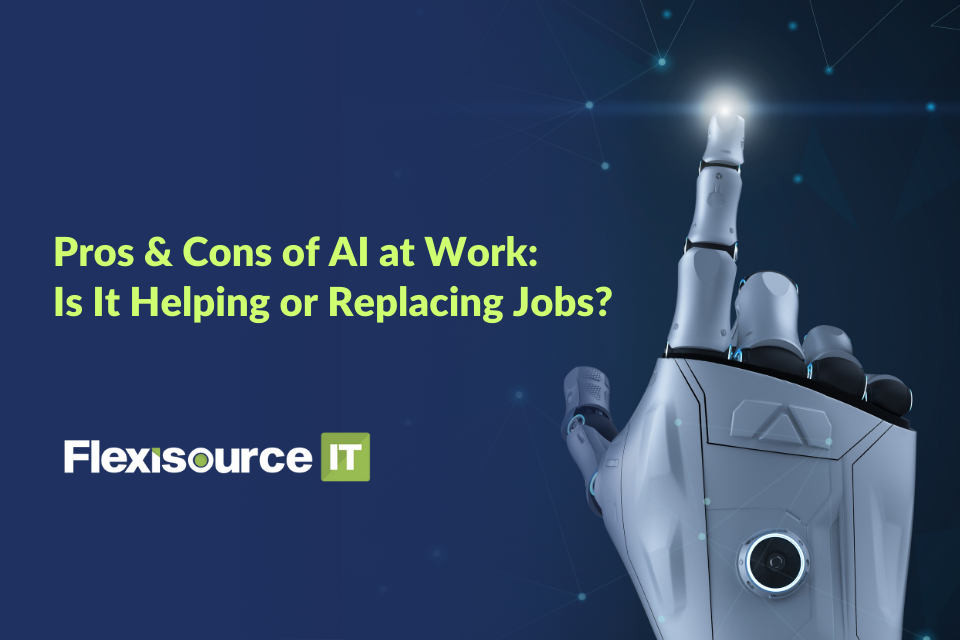AI at work isn’t just a concept for the future—it’s already here, transforming how we do business every day. Whether it’s helping with repetitive tasks or making big decisions in areas like finance and healthcare, AI is becoming a part of all kinds of jobs. Some people love it, saying it boosts productivity and gives them more time, while others are worried it’s replacing real workers and leaving people behind.
So, what’s really going on? Is AI making our jobs easier, or is it slowly pushing us out? Let’s take a look at the pros and cons of AI at work, explore real-world examples, and answer the big question—is it helping, or replacing us?
Pros of Using AI at Work
AI is making waves in workplaces around the world, reshaping how tasks are handled and improving overall efficiency. While some fear it’s taking over jobs, the truth is, AI productivity tools can be a powerful way to enhance productivity and streamline operations.

1. Boosts Productivity
AI handles repetitive tasks like scheduling, data entry, and customer queries, freeing up employees for more valuable work. This means quicker workflows and more time for creativity. AI improves efficiency across industries, making work faster and less tedious.
2. Cuts Down Human Errors
AI operates with precision and consistency, reducing human error in critical areas like finance and healthcare. Unlike people, it doesn’t make mistakes due to fatigue or distraction. Its reliability helps ensure high accuracy, even with complex tasks.
3. Works Around the Clock
AI doesn’t need sleep. It can manage tasks 24/7, providing uninterrupted support for customer service or data management. This ensures businesses remain operational even outside standard working hours.
4. Handles the Boring Tasks
By automating tedious tasks, AI lets employees focus on more strategic and interesting work. From sorting emails to generating reports, AI removes the monotony, keeping employees engaged in higher-level activities.
5. Opens Up New Roles
While AI automates some jobs, it also creates new roles in AI development, data science, and machine learning. These fields are growing, offering exciting opportunities for those willing to learn and adapt to new technologies.
Cons of Using AI at Work
While AI has the potential to revolutionise workplaces, it also comes with its challenges. There are significant drawbacks that businesses and employees need to consider before fully embracing AI, particularly when it comes to job displacement and reliance on technology.

1. Job Displacement
AI can replace jobs, particularly those involving routine tasks like data processing or customer support. This can leave workers in vulnerable sectors facing unemployment. While new jobs emerge, transitioning can be tough for those impacted.
2. Lacks the Human Touch
AI can’t replicate human empathy, creativity, or intuition. Jobs requiring emotional intelligence, such as counselling or teaching, still need a human presence. While AI is great for data, it’s not replacing the personal connection that some jobs rely on.
3. Risk of Bias
AI systems learn from data, and if that data is biased, AI can make unfair decisions. This is problematic in areas like hiring or lending, where biased algorithms can negatively impact certain groups. Ensuring fairness in AI systems is essential.
4. Can Be Costly
Setting up AI systems can be expensive, especially for smaller businesses. There’s the cost of the technology itself, plus training staff and maintaining the systems. The initial investment can be a hurdle for many companies.
5. Tech Dependence
Businesses that rely heavily on AI risk disruptions when systems fail. A malfunctioning tool can halt operations and affect productivity. Without consistent security testing, these systems may also be exposed to cyber threats or data breaches. That’s why having backup plans and safeguards is essential.
Real-World Examples of AI at Work
AI is already changing how we work in many industries. It’s helping businesses save time and improve results in ways we never imagined. Let’s take a look at a few examples of how AI is making a difference in the workplace.

1. Customer Service: Chatbots
In industries like retail, travel, and banking, AI-powered chatbots are handling customer queries 24/7. They answer common questions, process requests like booking a flight or checking an account balance, and escalate complex issues to human agents. This improves response time and customer satisfaction.
2. Healthcare: AI for Diagnostics
In healthcare, AI systems like Google’s DeepMind are being used to help doctors diagnose diseases faster and more accurately. For example, AI can analyse medical images (like X-rays or MRIs) to identify signs of conditions such as cancer, often spotting problems earlier than human doctors might. This can save lives and improve patient outcomes.
3. Manufacturing: Predictive Maintenance
AI is revolutionising the manufacturing industry with predictive maintenance. Machines in factories are equipped with sensors that collect data, which AI analyses to predict when a machine will need maintenance or repairs. This helps prevent costly breakdowns and downtime, improving efficiency and cutting operational costs.
4. Retail: Personalised Shopping Experience
AI-powered marketing helps retailers like Amazon provide personalised shopping experiences, analysing browsing habits and previous purchases to suggest products tailored to your preferences, boosting sales and enhancing customer satisfaction.
5. Finance: Fraud Detection
Banks and financial institutions use AI to detect fraudulent transactions. AI systems monitor patterns in data like spending habits, transaction amounts, and locations, flagging anything unusual. AI-powered cybersecurity helps prevent fraud in real time, protecting both customers and businesses from financial loss.
Final Thoughts
So, is AI helping or replacing jobs? The truth is, it’s doing a bit of both. AI is changing the way we work, and while it’s not about taking over every job, it’s certainly transforming how we do things. It helps speed up tasks, takes care of the boring stuff, and keeps things running more efficiently. But it’s not all smooth sailing—some jobs may disappear.
The best way forward is to find a balance. Let AI handle the repetitive tasks it’s great at, but don’t forget the value of human creativity and critical thinking. That way, we can build a fair and balanced workplace where both humans and machines work together for the greater good, ensuring fairness and innovation in the process.
Want to learn how AI can transform your business? Contact Flexisource IT today!







